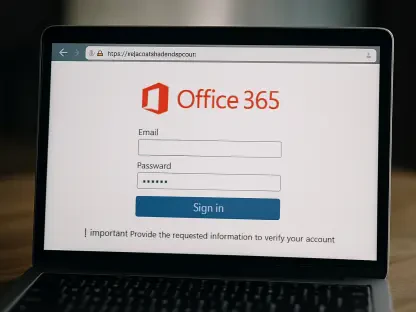In the interconnected digital world, the OilRig hacking group has emerged as a significant cyber threat, particularly concerning their exploitation of Microsoft Exchange servers. This article explores the sophisticated methods employed by this Iranian-linked Advanced Persistent Threat (APT) group to infiltrate, persist, and exfiltrate sensitive information. We will delve into their precise tactics, targets, and the broader implications for cybersecurity. The activities of OilRig, also known as Earth Simnavaz or APT34, underscore the escalating risks faced by critical infrastructure and governmental systems across the globe, emphasizing the need for enhanced vigilance and robust cybersecurity measures.
Understanding OilRig: The Cyber Espionage Entity
OilRig, also known as Earth Simnavaz or APT34, stands out among cyber espionage groups due to their close association with Iranian interests. Their primary targets are the energy, government, and critical infrastructure sectors, specifically within the UAE and Gulf regions. These sectors are strategically significant, adding weight to OilRig’s objectives and enhancing the potential impact of their activities. The group’s operations are driven by geopolitical goals, aligning their efforts with broader strategic interests tied to Iran’s regional objectives. As a result, their targets are chosen carefully, reflecting the high stakes and potential damage their activities could inflict.
The group’s methods have evolved over time, showing increasing sophistication in both planning and execution. They utilize multi-stage attack vectors, which highlight their commitment to persistence and data pilferage. By understanding OilRig’s background, we grasp the severity and intricacy of their operations. Their ability to adapt and enhance their techniques indicates a high level of technical skill and access to considerable resources. This adaptability has allowed OilRig to maintain its relevance and effectiveness in an ever-shifting cybersecurity landscape, making them one of the more formidable threats in the realm of cyber espionage.
Exploiting Microsoft Exchange Servers: Entry Points and Initial Steps
OilRig’s campaigns frequently begin with targeting vulnerable Microsoft Exchange servers. The group exploits specific vulnerabilities to gain an initial foothold, often leveraging unpatched systems to deploy their backdoors. One common technique involves uploading a web shell to the compromised server, enabling Remote Code Execution (RCE) and the ability to manipulate files remotely. This initial step is crucial as it sets the foundation for the rest of their exploitation activities, providing them with the necessary access to further infiltrate the network.
Once the web shell is in place, OilRig begins its sophisticated attack chain. The initial breach sets the stage for subsequent malicious activities, including privilege escalation and lateral movement within the network. The use of web shells not only provides RCE capabilities but also allows the attackers to maintain a persistent presence on the compromised servers. This persistence is key to their strategy, as it allows them to conduct long-term surveillance, data exfiltration, and further exploitations, all while remaining entrenched within the victim’s network. This initial foothold is the starting point for a series of more complex and targeted attacks designed to maximize the impact and effectiveness of their operations.
Advanced Tools and Techniques for Persistence
OilRig’s toolkit is composed of various advanced tools designed to maintain persistence and evade detection. For instance, they deploy “ngrok,” a remote monitoring tool, to facilitate network persistence and lateral movement. This tool helps them communicate covertly and securely with their command-and-control (C2) servers. By leveraging such tools, OilRig can mask their malicious activities, blending them with legitimate traffic to avoid raising suspicions. This approach makes detection exceedingly difficult, allowing them to operate under the radar for extended periods.
Additionally, the group employs custom loaders, encrypted payloads, and creative use of legitimate system tools like PowerShell. Scheduled tasks and scripts ensure that their malicious presence goes unnoticed for extended periods. By blending their activities with normal network operations, they significantly complicate detection and remediation efforts. The sophistication of their toolset allows them to execute unauthorized actions while avoiding traditional security measures, showcasing a deep understanding of both cybersecurity defenses and potential blind spots. This capability to evade detection while maintaining control over compromised systems underscores the high level of threat they pose.
Exploiting Vulnerabilities: Escalation and Credential Theft
One of OilRig’s notable tactics involves exploiting the Windows Kernel vulnerability (CVE-2024-30088) to escalate privileges. This escalation is achieved through the RunPE-In-Memory technique, allowing them to inject malicious code directly into memory, bypassing traditional disk-based security measures. By exploiting this specific vulnerability, OilRig can gain higher levels of access within the compromised system, further entrenching themselves and expanding their control. This step is vital for their operations as it enables them to conduct more sensitive and high-impact activities undetected.
Credential theft is another critical component of their operations. They use a “password filter DLL” to capture and exfiltrate credentials efficiently. This method is especially effective on Exchange servers, where they can intercept login details and gain access to broader network resources. Such stolen credentials are invaluable for lateral movement and further exploitation within compromised environments. By obtaining valid user credentials, OilRig can navigate through the network with ease, accessing sensitive information and systems without triggering security alarms. This tactic highlights the importance of securing credentials and monitoring for unusual access patterns as part of defensive measures.
Relationship With Other APT Groups and Broader Implications
In today’s interconnected digital landscape, the OilRig hacking group has emerged as a major cyber threat, especially with their targeted attacks on Microsoft Exchange servers. This piece examines the advanced techniques used by this Advanced Persistent Threat (APT) group, which is reputedly linked to Iran, to breach, persist in, and extract confidential information from targeted systems. We will explore their specific methods, the types of targets they focus on, and the broader repercussions for global cybersecurity. Known also as Earth Simnavaz or APT34, OilRig’s activities highlight the growing dangers faced by critical infrastructure and governmental systems worldwide. The group’s actions stress the urgent need for heightened awareness and stronger cybersecurity protocols. This discussion serves as a crucial reminder for organizations to fortify their defenses and be more vigilant against such evolving cyber threats, exemplifying the increasingly sophisticated landscape of cyber warfare.









